If you consider yourself a true traveler and someone who likes to feel the rhythm and pace of each town you visit, Ávila, Spain may well be your ideal destination. A town nestled in the province of Castilla y León, Ávila is brimming with old-world medieval essence, natural beauty, and religious grandeur, as St. Teresa of Ávila was born there.
Be warned, jet-setters seeking the quintessential postcard version of Spain (Spanish guitar, flamenco, sangria, and paella) may be disappointed. However, if you’re looking for a lesson in religious history, scrumptious farm-to-table food, and medieval architectural splendor, this town will be your solace. Ávila won me over on a freezing sleeting weekend in April, if that’s any testament!
A Guide to Ávila, Spain
Ávila Map & Resources
- 🇪🇸 Language: Spanish
- 💰 Currency: Euro
- 👥 Population: 58,000
- 🥘 Perfect for: Religious enthusiasts, foodies, history buffs
Best Time To Visit Ávila
Ávila is home to a temperate Mediterranean climate. Typically, the best time to visit is during the shoulder seasons of fall or spring because you’ll evade the scorching summer and chilly winters. As Ávila is not one of the main tourist towns in Spain, you won’t find crazy crowds even in the high tourist season of May-September – a nice bonus!
Where to Stay in Ávila
Ávila is very small and walkable. Most tourists choose to stay in the heart of the town, close to the historical attractions and beautiful architecture. Look for hostels in the Walled City Center or Centro Hístorico if you want to be close to the main tourist hub. The zone around the train station is another good option for quieter accommodation.
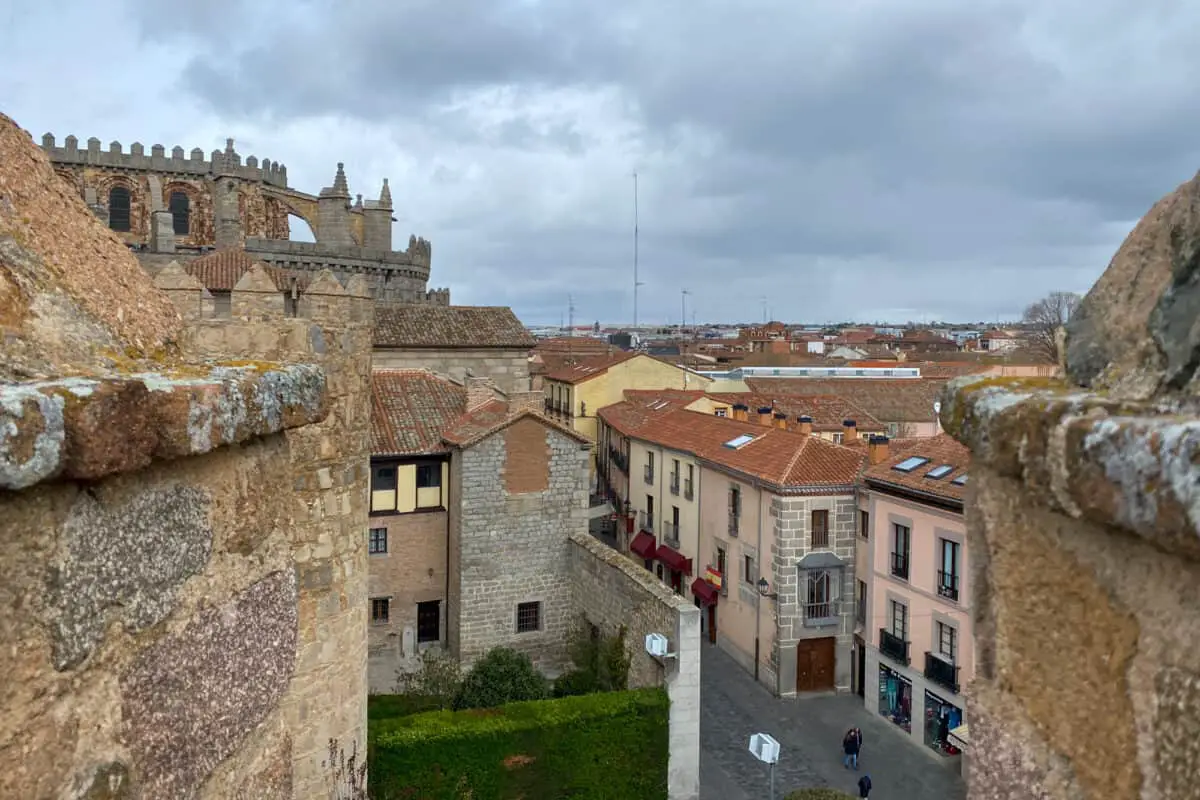
Hostels in Ávila
As mentioned, Ávila is a very small town and doesn’t boast a wild hostel scene. In fact, there are barely any true hostels in the town. Instead, they have hostals, which are fusions between hotels and hostels that offer budget prices. You can stay in a private room in a hostal for around €20-40 a night, ideal if you’re traveling with a buddy.
Disclosure: Some links on this page are affiliate links. We always write our articles before checking if affiliate links are available.
Travelers say the staff at this hostel are friendly and attentive. While it’s definitely bareboned, it’s typical of the simple lifestyle in Avila. Hostal la Estacion is known for its cleanliness and you can get a private room for around €20 a night.
This hotel cum hostel is in a central location with comfortable beds. It also offers amazing views of the emblematic city walls. You can get a private room for around €30 a night.
The location of Le Vintage is unbeatable – it’s only 500km away from the main cathedral. This hostal offers its guests a cozy atmosphere with board games and breakfast included as part of the room rate.
10 Things To Do in Ávila, Spain
1. Walk Along the City Walls (Muralla)
Although beautiful to marvel at from below, for a small price, you can pay to ascend the muralla, which is the city wall ramparts, complete with spiky parapets. This is one of the best preserved ancient walls in Europe and the biggest in the world, second to the Great Wall of China!

It was built for defense from the Moors and also to control entrance during the Great Plague. The classic spiked ramparts, steep pillars, and parapets will transport you back to the fairytale books of your childhood.
Roam the narrow fortress walls, feast your eyes on the fertile fields in the distance, let the cathedral meet you at eye level, and enjoy a bird’s eye view of the charming medieval square below.
The muralla features 88 towers and nine gates, the most popular being the Puerta de Alcazar. If it wasn’t yet obvious, yes, it’s a famous UNESCO World Heritage Site!
2. Watch the World Go By in the Central Plaza
It’s not a trip to a Spanish town without a pitstop to watch the world go by in the central plaza. Ávila’s main plaza is called Plaza del Mercado Chico, and although not as grand as those in other cities (as its name implies), is a sweet spot for a café con leche and people-watching.
I enjoyed watching the locals chat here. Ávila feels like a town where everyone knows each other and the passersby are frequently greeted by two kisses on the cheek. It’s a charming snapshot of Spanish life.
3. Check Out the Catedral De San Salvador
This stunning gothic cathedral is integrated beautifully into the muralla and its distinguished profile towers over the muralla’s parapets. Construction started in 1095 and finished in 1475, and in my opinion, it merits the same distinction as Notre Dame.
Wander through the hallowed halls and let your jaw drop at the stained-glass, cavernous walls, and exquisitely carved choir chamber. It’s worth craning your neck to admire the stunning ceiling, grandiose chandeliers, hanging candles, and the Puerta de los Apóstoles, the sculptures on the door of the main entrance.

The ticket for the Cathedral also includes entry to a museum that exhibits ancient scripture, art, and other religious garb and artifacts.
4. Salivate Over Ávila’s Decadent Cuisine
Ávila is known for its beef, which we will get to later. However, vegetarians and carnivores alike can enjoy the decadent flavor spectrum that the food from Castilla y León boasts. The food tastes very fresh and many restaurant owners love to chat with their customers about their house specialities.
5. Explore the Jewish Quarter
Although now dominated by Christian architecture, Ávila once had a bustling and flourishing Jewish community. The Jews resided in both the northeast and southeast quarters of the town.
Head to the street Calle Reyes Católicos (previously Calle Arin) for a glimpse into the past, once alive with artisan shops run by Jews before their expulsion. Meander through the cobblestone streets and pretend you’re wandering through the fourth century.
6. Visit La Iglesia de Santa Teresa
Visit this sacred spot to pay respect to Saint Teresa of Ávila. Off to the left of the main church is the Capilla Natal, the chapel room where St. Teresa was born. You can enter and peek into her childhood room adjacent to the stunning Baroque-style chapel gilded in gold.
You can also visit the Saint Teresa Museum to learn more about her legacy and spiritual writings. It is open from April to October.

7. Visit the Capilla de Mosén Rubí de Bracamonte
To continue on a religious history tour, head to this peaceful church for some respite. Situated in a quiet and pastoral area of town, it is now run by nuns. Its interior is somber and intriguing – do not miss seeing the Cristo de Las Batallas, an evocative sculpture of Christ that dates back to the 1600s despite its modern appearance.
Admire the choir stalls and pay your respects to the tombs of the patron saints of the church, uniquely placed in the center.
8. Geek Out at the Museo De Ávila
If you are a history nerd, (which is a wonderful thing to be in Spain), don’t pass up the opportunity to see the archaeology, ethnography, and fine art this museum offers. The Roman sculptures of Triton and Nereida are one of the highlights. The museum does a great job of showcasing life in the 16th century and before.
9. Head to the Roman Bridge
This stunning piece of architecture straddles the Adaja River. Its age certainly shows – part of it is still the original Roman structure! Cross it for a great photo opportunity of the muralla from a distance.
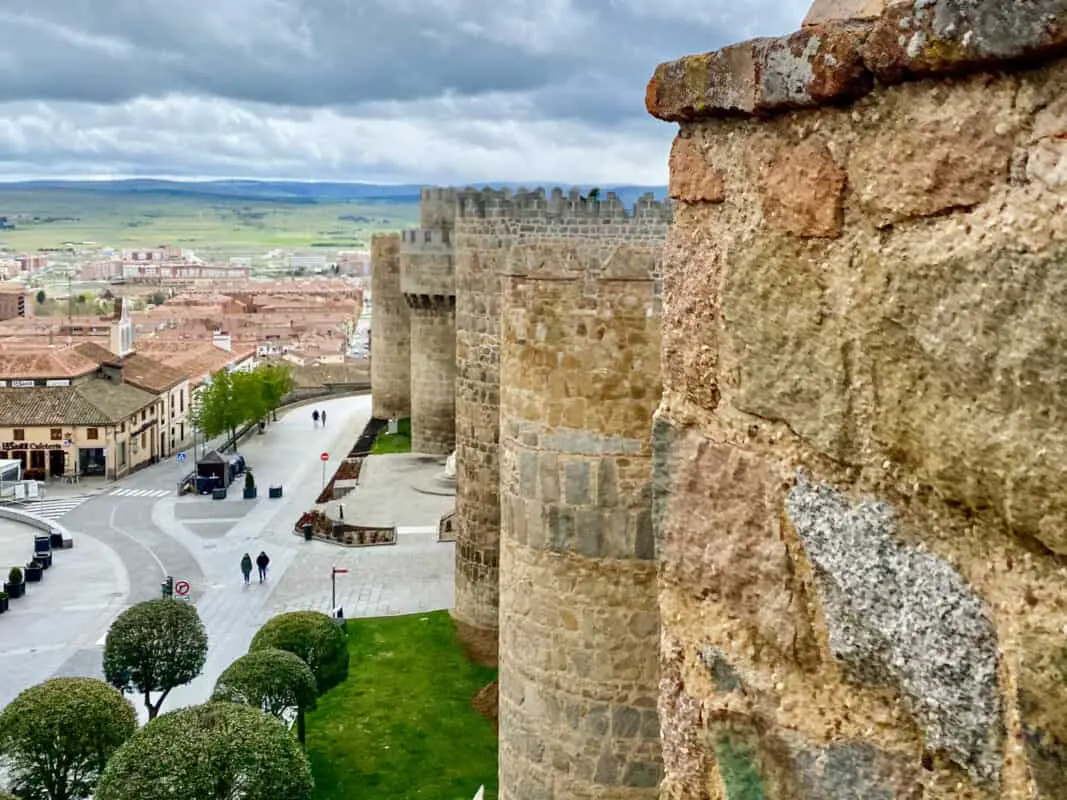
10. Visit El Soto Natural Park
Particularly splendid in the autumn, this park will provide a little slice of peace after a busy day touring old buildings. Located a little out of town, there are many tree-lined paths and small ponds to explore.
Food and Drink in Ávila
Ávila’s traditional cuisine is pulsing with freshness, as the products remain local and dishes boast Hebrew, Christian, and Muslim influences. A must-try is the renowned chuletón de Avila, which is a local steak filet, traditionally served rare (you can of course order it as you wish).
Castilla y León is known for cattle breeding, manifested in the various meat dishes the city boasts. You will know that it is certified beef if it comes adorned with the official toothpick flag bearing the words ‘Geographical protected zone: Carne de Ávila, España’.
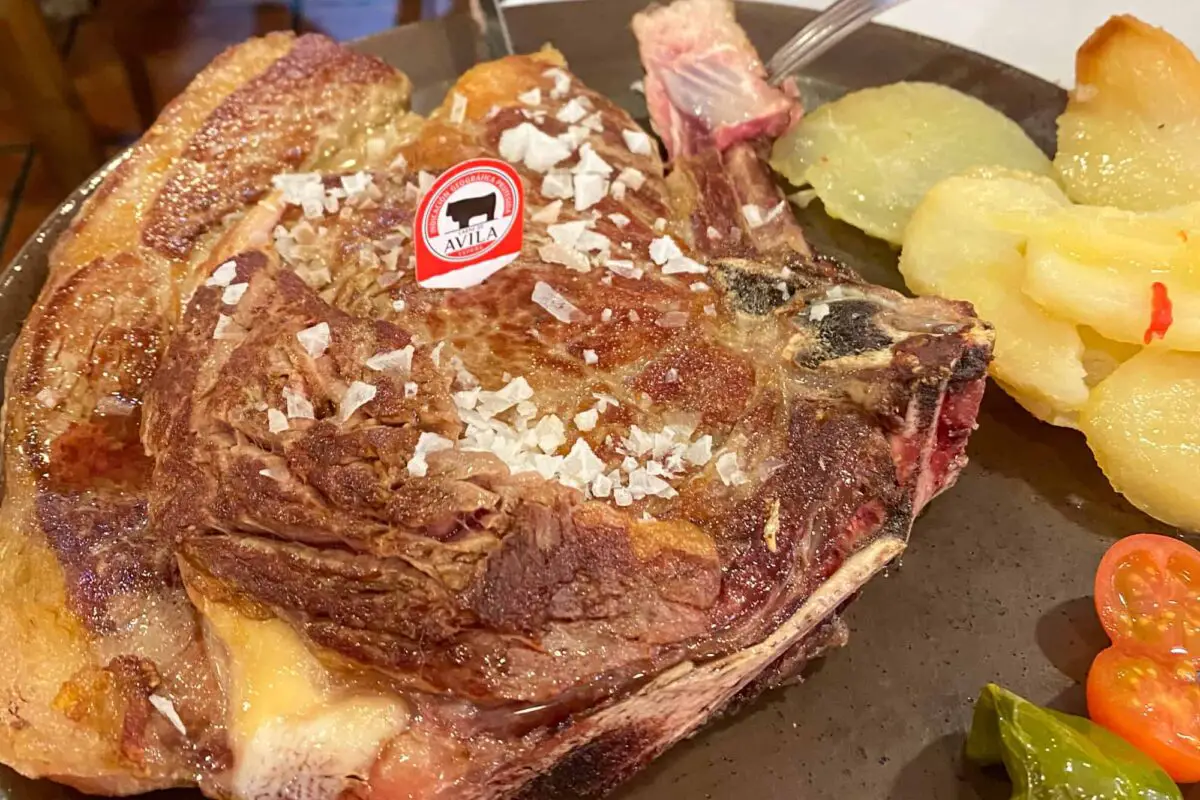
Aside from the beef, the town is also known for hearty stews, roasts of all kinds, and potatoes. Most main dishes have vegetables and beans, such as the morañego chickpea stew and the ajoarriero cabbage. One of my all-time favorites from Spain is the patatas revolconas, essentially mashed potatoes sprinkled with paprika and framed by torreznillos (pork fritters).
On a cold and rainy day, you can’t miss the judías del barco, a sensational bone-warming stew. The salty chorizo paired with savory broth and juicy beans is sinfully scrumptious. The chorizo and sausage scene in Ávila is phenomenal – be sure to try a hornazo, a savory egg and sausage pie.
Another must-try is the legendary yemas de Santa Teresa, simple sweets made of only egg yolk, water, sugar, and lemon. According to modern legend, these pastries became popular during Saint Teresa’s lifetime. During this period, winemakers typically would use egg yolks to help purify their wine. The leftover egg yolks were distributed to nuns, who would traditionally prepare and sell sweets to help fund the convent. Head to the café La Flor de Castilla 1860 to try some.
And, while you’re in town, don’t miss the following mouthwatering restaurants…
Mesón Gredos: Personally, I believe the best Spanish restaurants make you feel as though you are a guest in someone’s dining room! With that in mind, you can’t miss eating at this nondescript restaurant. As soon as you walk in the door, you are welcomed by knotted strings of chili peppers, garlic, and Spanish jamón wound around the stairway like Christmas tinsel!
The space is intimate and the food is scrumptious. Definitely order the head-sized patatas revolconas topped with pork belly and the judías del barco. For dessert, don’t miss the cheesecake, which is hands down the best I’ve ever had. It’s sweet yet uniquely savory and dense yet light. The quality is certainly testimony to an unfaltering family recipe.
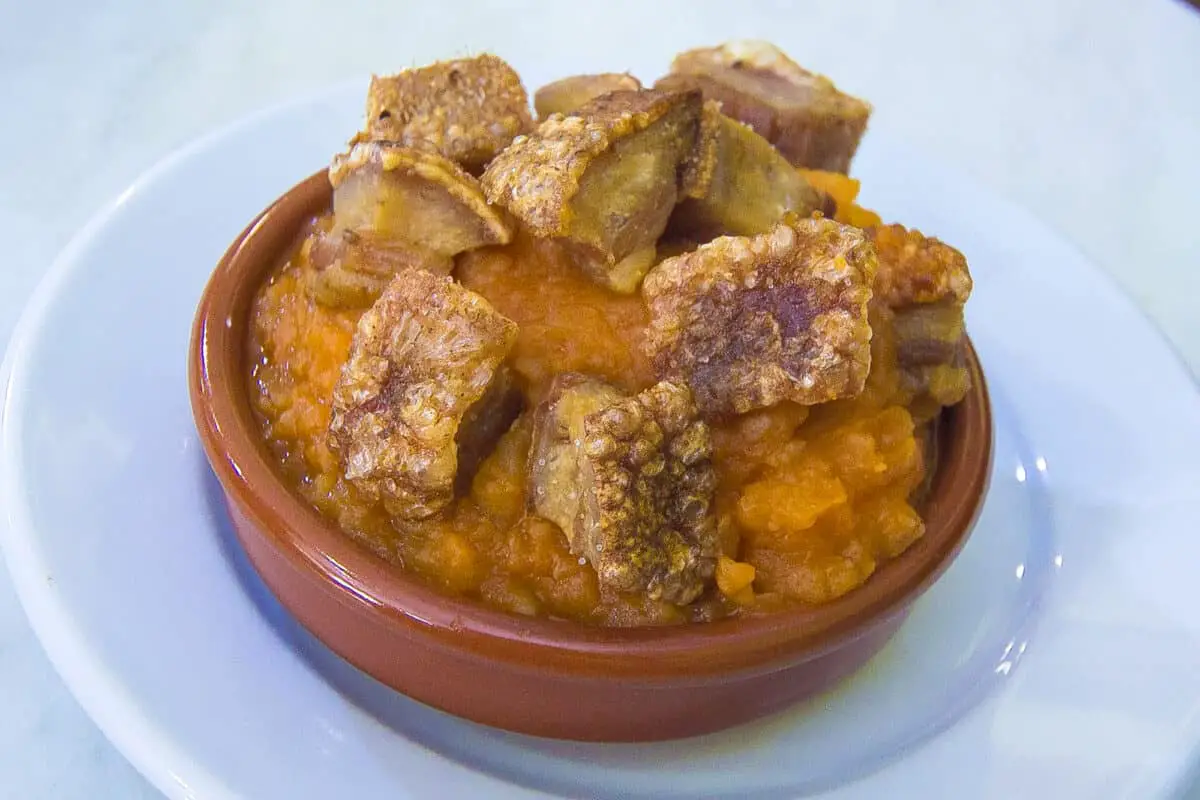
Los Candiles: This is one of the most famous restaurants in town, so it is wise to make a reservation beforehand, although not strictly required. Los Candiles is a modest family-owned spot that is always packed during classic mealtimes.
You won’t even blink at the lack of decor because the food is such a distraction. Los Candiles is where you want to order the Chuleton de Ávila, served piping hot and branded with the signature toothpick. To seamlessly pair it with wine, order a very fairly priced glass of the full-bodied red, made by the owners.
Venta San Isidro: This is one of those spots where the decor is absolutely plain Jane but the food is pure fireworks. The owner Antonio is very attentive and friendly. He may even have the power to change your mind about the poor customer service reputation Spain gets! You can’t go wrong ordering the callos fish, croquetas, or chorizillos al vino. Honestly, anything on the menu is a good pick!
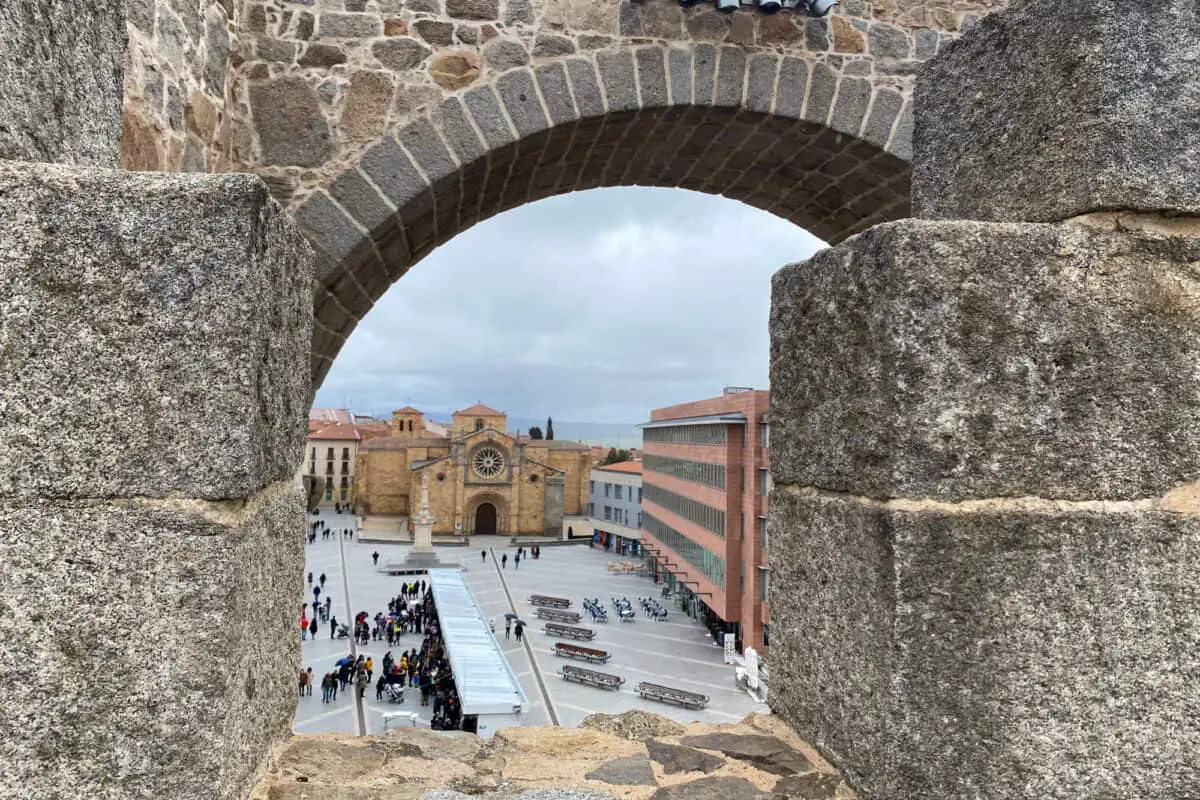
How To Get to Ávila
Avila is extremely accessible from Madrid by train or bus, as it’s only about a two-hour trip. You can take a train or bus from many of Madrid’s train stations such as Atocha, Príncipe Pío, Chamartín, and Moncloa. It’s also a simple journey from León, although it takes about three hours by train.
Where To Go Next:
If you enjoy long walks along bustling promenades, a teeming art scene, and trendy bars, you may be itching for these big-city attractions after your trip to Ávila. Consider heading to nearby Madrid or León to satisfy your travel craving.
If you enjoyed Ávila’s slow-paced lifestyle, definitely check out Segovia nearby for more history and scrumptious cuisine. Rianza, Piedrahita, and Candeleda are stunning villages also fairly close by. Rianza is a personal favorite, it’s a gem of a town that smells of firewood on every corner and with lots of nearby hikes.

